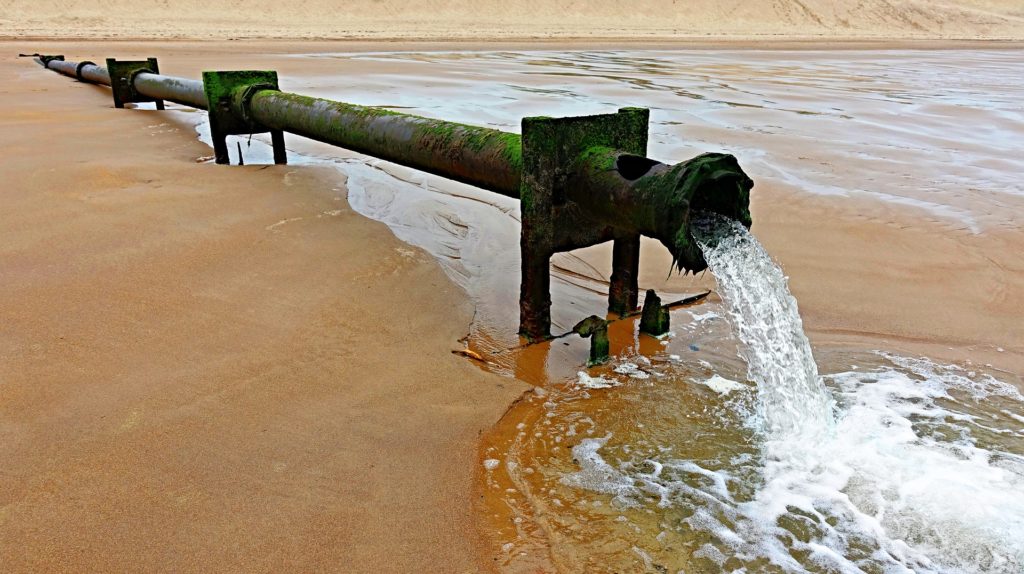What is a SWPPP and Why do I Need One?
“I’ve been doing this for 40 years and I’ve never had to have a SWPPP before. Why do I need one now?”
People ask me this question a lot. In fact, people ask me this question way too often. It’s time we put the subject to rest. SWPPPs aren’t new and they aren’t going anywhere. This may be the first time you’ve heard of it, but it certainly won’t be the last.
What is a SWPPP?

SWPPP stands for Stormwater Pollution Prevention Plan. The name pretty much says it all. A SWPPP is a plan that must be in place on all construction and industrial production sites that disturb more than 1 acre of land. They are also required for a lot of projects that disturb less than 1 acre of land.
The SWPPP tells the EPA, your state, and your municipal separate storm sewer system (MS4) exactly how you plan on keeping sediment, debris, fuels and oils, paint, concrete, and any other pollutant you might generate out of the storm drains, lakes, rivers, streams, oceans, and even groundwater.
A SWPPP is a big deal. A lot of companies, cities, and states have been fined thousands of dollars for either not having a SWPPP or not adhering to the one they have. And that brings us to the next part of our question, why you need one.
Why do I need a SWPPP?
While this is a complex question that deserves a descriptive response, the bottom line is that you need a SWPPP to save money.

If your project requires a SWPPP and you don’t have one, any environmental control agency with jurisdiction over your site (EPA, State, City, County, etc.) can shut you down until you provide one. You may also be fined for failing to adhere to the stipulations in the Clean Water Act and the various permits held by those entities. These fines are calculated per infraction per day, so they can really start to add up. If for no other reason than to save yourself money, you should make sure you have a SWPPP in place for your project.
The REAL Reason…
That being said, the real reason you need a SWPPP is to ensure that everyone working on your site is on the same page about how you will protect the water bodies that receive stormwater runoff from your site.

Here is the scenario: You are building a new strip mall and hire ABC Excavation to come in a grade the site. They clear and grub and grade the site, leaving it exposed and ready to put in the pads. The next day, it rains. The top layer of that soil is carried by the rain off the site and into the storm drains. The storm drains carry it out to a nearby stream and dump it there. The stream, now full of all of the excess sediment from your site, becomes murky and cloudy. The fish there can’t see, they can’t find food, or they can’t breathe so they die. This affects the entire ecosystem. This stream also happens to be filtered and used for drinking water, but all the excess sediment clogs up the filtration systems and they have to be fixed. The city doesn’t have these repairs in the budget, so they start to follow the trail back to the culprit. They follow the sediment trail back to your construction site. Dead fish, endangered wildlife, broken equipment. Who is going to pay for all of this? You are.
All that was just from the dirt running off your site. Now imagine ABC Excavation cut a hydraulic line and spilled oil. Or they dumped their excess concrete waste on the ground and it ran into the storm drain. Maybe the painters washed out their equipment into the storm drain. Since there is no plan, no one wants to be held responsible for anything they did wrong. This is where your SWPPP saves you.
Permits and Regulations
You probably already know, but the Clean Water Act came in response to some pretty unethical construction practices that ended up with an entire river on fire. It has evolved to help protect our waterways from a whole slew of unhealthy gunk. Most of this pollution into the waters of the U.S. comes from construction activities. For decades, the EPA has required that permits be filed and SWPPPs be in place for all construction activity larger than 1 acre in size, and for some activities under 1 acre in size.
If you haven’t had to comply with the regulations in the past, it’s because your local environmental authority has been failing at their job. If providing a SWPPP for your project is new to you, they probably got fined or at least audited. Now they are doing their job and requiring that a SWPPP and proper protections be in place on your site.
Most States have a template for how they want the SWPPP written. Even so, the permits the templates are based on can span over 300 pages. It’s not an easy task to get a SWPPP written and approved. That’s why we are here. Head over to www.accenagroup.com and check out our services. We’ll make sure you get your SWPPP approved and you can get going on your project. We can even help with inspection services, online reporting, permit filing, and everything else you need to stay compliant with the EPA and your local permitting authority.
For Stormwater Training, visit us here — www.stormwatergo.com

